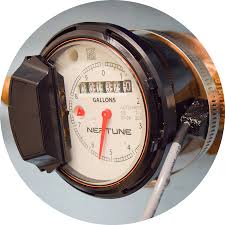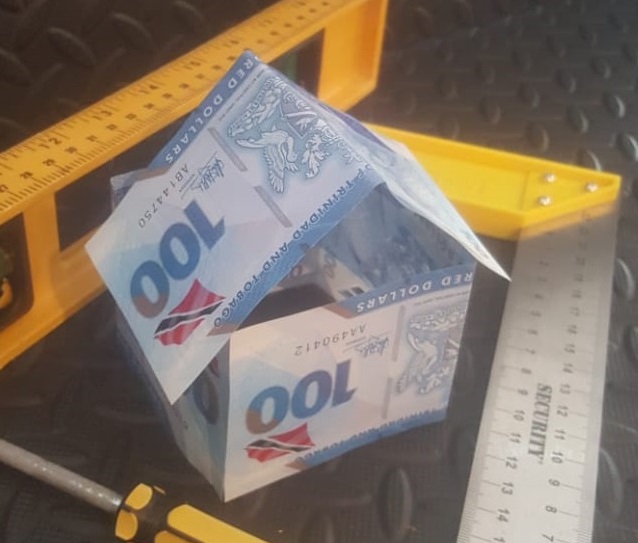ABC’s of Building Management (Part 1)

- By : Details Integrated Solutions Ltd.
- 1 Comment
In this three-part series we explore some simple steps (ABC's) to achieve excellence in building management and deliver value in challenging economic times.
One of the greatest challenges facility managers generally face is a lack of adequate resources. They are very often understaffed and under-budgeted. They are also often challenged with ageing infrastructure, repeatedly deferred maintenance, and sometimes executives who simply do not understand facilities management (FM). As a result, many facility managers are therefore constantly asked to do more with less.

But how can one do this and still deliver value in these challenging economic times? We will explore three steps to achieve this, breaking each of these into smaller ''ABC'' processes, complete with tips on how to achieve them with limited resources.
There is an often-quoted adage..."If you don't measure, you can't manage" But to take that further, consider that if you can't manage - you can't control. And if you can't control - you can't improve. And if you can't improve you are losing money, because you are inadvertently wasting organisational resources! So, the first point on our To Do List is simply this:
1. "Know Your Facility"!
And the ABC's of this is simple...
A - Assets
Know what Assets you must maintain, otherwise called your Asset Inventory. This is a listing of everything in your facility that requires maintenance. Consider all of the various components of your building envelope, your grounds or within your building systems that you need to maintain. When were those assets installed? Who supplied them? How much did they cost? Under normal circumstances how long are they expected to last?

Your asset register should also detail key information about these assets, such as when commissioned, serial and model numbers, and assign unique identification numbers for each asset. It doesn't matter if you use numeric codes, alpha-numeric codes, or if you simply name an asset John or Jane after an equally troublesome ex. What is important is that you are consistent in how you assign the names/codes and that you reference that code to every single activity involving that asset, such as service history and cost. This basic information will help you substantially in your decision-making activities.
But, how do you go about compiling all of this with limited resources and on a limited budget? Of course, there are vendors who can compile this for you for a fee. However, there are other ways to compile this when financial resources are limited. Start with your Finance Asset Register. Although it won't cover everything in your portfolio, it gives a good base as it itemizes any assets which still have a 'book value' to the organization. Your service providers can also complement this process by compiling required information as they service your respective assets. Finally, your staff can fill in the rest of the information one area at a time in between higher priority tasks or by dedicating a few hours every week to this activity. If staffing is critically limited or unavailable, consider assigning this as a worthwhile project to student interns; providing valuable on the job experience to them, while you close an existing operational gap.
B - Benchmark

Know to what Benchmark Standards you want your assets maintained. For each of those components you have identified, how are they recommend to be maintained to maximise their life span? Are you therefore under maintaining them? Are you over maintaining them? Are there specific periodic checks or maintenance activities that you should be undertaking that you are not? Are there assets you should be maintaining that you are not? Do you have the right parties engaged to properly perform the required maintenance?
Ideally this should be in keeping with industry best practice. If you are unsure about this, consult your equipment manuals. If you don't have them, many can be found online or try contacting your equipment manufacturer for guidelines. Alternatively, consult with reputable vendors or review industry publications. Finally, you can also consult with fellow facility managers. FM associations are an excellent way to network with other FMs, and they often have forums which easily facilitate many types of information exchange.
So, now that you have determined (A) exactly what there is that you have to maintain (your Assets), and you have determined (B) the best way in which it should be maintained (via Benchmarking), let's look at C - Condition and Cost and Control.
C - Condition

Know the Condition of your assets (Condition Assessment). What condition are your assets currently in? Will they last for their expected lifespan? What additional work needs to be done on them so they will last for that lifespan? Is this additional work practical given their current condition? Do they need to be replaced? How soon will they need to be replaced?
The answers to these questions help significantly in understanding the most appropriate type of maintenance that should be applied, as well as the frequency of maintenance needed. One of the simplest ways to conduct an asset condition assessment is to simply have your service providers do it when they are performing routine maintenance. Incorporate it as a requirement in you service reports or inspection logs. Again, your staff can assist in compiling this information in between higher priority tasks or by dedicating a few hours every week. In either case, it is best to have a standard means of rating the condition of the assets on a scale from showroom condition to requiring urgent replacement. It may not be a professional assessment... but some information is better than none at all. And this will help you in determining where and when you actually need to dig deeper into your budget for a more detailed specialist assessment on specific assets.
Estimating the remaining expected useful life is also extremely beneficial for budgeting and planning purposes... which brings us to the subject of Cost.
C - Cost
How much did the asset cost initially? How much are you spending to maintain them? How much have you spent to date? Is there a practical way we can reduce or better manage these costs?

For reasons such as this, it is important to track not only the upfront cost in the purchase of an asset, but all other related costs such as routine maintenance, repairs, upgrades and even the cost of disposal, throughout the entire life of the asset. Taking an asset's lifecycle cost into consideration, especially during procurement, makes for not only smarter purchasing decisions, but also better financial management during its lifecycle.
One of the most effective ways to track cost is via a computerised maintenance management system (CMMS). While the cost of these systems varies significantly, there are increasingly more systems which offer basic functionality at the lower end of the price range. These systems help automate the use of work orders which should be used to track all maintenance activity; such as time response, parts used, cost, root cause, and technicians’ feedback. However, a paper-based work order system can still be implemented even in the absence of a CMMS.
Your finance department/person is one of your key resources in tracking cost and it makes good sense to work closely with them to ensure you get the information you require. In the absence of such information, I have found it practical to track my facility costs via a simple spreadsheet. I also use this for comparing my day to day expenditure against my budgeted expenditure for up to date analysis and decision making.

C - Control
All these steps…ABC are to get you to the point of Control where you have enough information to effectively manage and control your facility; and thereafter improve to achieve cost savings. I know at first, implementing these steps may seem like the beginning of a never-ending spiral staircase; especially with limited resources. My recommendation to you to achieve this is simply this... one step at a time! It's not going to happen overnight. But every journey no matter how long begins with a single step... and if you don't take those initialsteps... you will remain exactly where you are!
In our next session we will examine the "ABCs" of the second step to achieve excellence in building management and deliver value in challenging economic times.

One Reply to “ABC’s of Building Management (Part 1)”
Thanks for the good article, I hope you continue.